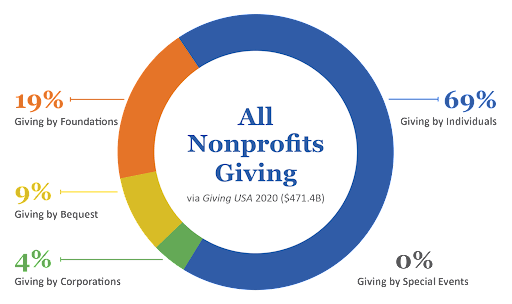Nonprofit Firm: Customized Solutions for Sustainable Development and Impact
Nonprofit Firm: Customized Solutions for Sustainable Development and Impact
Blog Article
Examining the Obstacles and Opportunities Dealt With by a Nonprofit Company in Getting Its Goal and Goals in Today's Society
In the existing landscape, nonprofit firms are navigating a complex selection of challenges, such as varying funding sources and raised competitors for donor interaction. These troubles, while intimidating, can additionally open methods for development and cooperation that might enhance their capacity to satisfy objectives. By checking out exactly how nonprofits can strategically adapt to these dynamics, we can reveal not only the techniques they utilize to overcome challenges yet also the untapped possibility that lies within their functional structures. What remains to be seen is just how these companies will certainly harness these opportunities to redefine their impact in society.
Current Landscape for Nonprofits
The present landscape for nonprofits is identified by a complicated interplay of developing financing versions, increased competitors for contributor attention, and raising demands for responsibility and transparency. Not-for-profit companies are increasingly expanding their income streams to consist of grants, individual donations, corporate sponsorships, and social enterprise initiatives. This change shows a strategic feedback to traditional financing resources becoming much more affordable and unpredictable.
Moreover, the rise of electronic interaction systems has actually transformed exactly how nonprofits engage with possible donors. Social media site, crowdfunding, and online projects are now essential tools for reaching broader audiences, yet they additionally intensify competition amongst organizations contending for limited resources. In this setting, nonprofits must improve their messaging to efficiently capture the passion and commitment of advocates.
Additionally, stakeholders are requiring greater transparency concerning how funds are designated and the quantifiable impact of nonprofit activities. This trend necessitates that companies take on robust accountability procedures, including thorough coverage and analysis structures, to show their efficiency. Subsequently, the not-for-profit sector is browsing a landscape that requires ingenious reasoning, strategic adaptability, and a dedication to ethical practices in order to prosper amidst these vibrant obstacles and chances.
Trick Challenges Come Across
Navigating the not-for-profit field provides a myriad of difficulties that can hinder business effectiveness and sustainability. One of the most pressing problems is the dependence on irregular funding resources. Nonprofits commonly depend upon gives, contributions, and government assistance, which can rise and fall considerably, bring about economic instability and troubles in lasting planning.

Team retention and volunteer involvement posture further challenges, as many nonprofits battle to provide affordable salaries and advantages. The high turn over rates can disrupt business connection and influence service delivery.
In addition, adapting to technological developments and digital makeover stays a hurdle for numerous nonprofits. An absence of sources and know-how can prevent organizations from leveraging innovation efficiently, thus limiting their outreach and efficiency.
Eventually, these obstacles call for nonprofits to use critical preparation and ingenious strategies to maintain their objective and make certain sustainability in an intricate landscape. nonprofit agency.
Emerging Opportunities
How can nonprofits harness emerging possibilities to improve their impact? In today's rapidly advancing landscape, nonprofits have the opportunity to utilize technological innovations, shifting social characteristics, and increased public understanding to enhance their goals. The surge of digital platforms enables organizations to expand their reach, involving with diverse audiences official source and fostering area connections. By making use of social networks and on-line fundraising devices, nonprofits can boost presence and draw in more youthful benefactors that are extra inclined to support reasons they resonate with.
Additionally, cooperation with companies and other industries is becoming a lot more prevalent, offering nonprofits with accessibility to sources, competence, and innovative remedies. Collaborations can enhance campaigns, drive community engagement, and develop lasting impacts. In addition, the growing emphasis on business social duty uses nonprofits possibilities to straighten with organizations that focus on social effect, getting financial backing and shared objectives.
The boosting concentrate on data-driven decision-making makes it possible for nonprofits to much better examine their end results and programs, boosting responsibility and performance. By accepting these arising opportunities, nonprofits can Full Article not just fortify their operational capacities yet additionally broaden their impact in resolving pressing social issues, ultimately driving purposeful adjustment in their areas.
Approaches for Adaptation
Adjusting to a continuously changing environment is necessary for nonprofits intending to sustain their influence and performance. To navigate the intricacies of modern-day culture, nonprofits have to execute calculated strategies that enhance their strength and responsiveness.
One secret method involves leveraging modern technology to enhance procedures and increase outreach. By making use of digital systems, nonprofits can improve communication with stakeholders, boost fundraising efforts, and boost awareness of their objective. Furthermore, embracing data-driven decision-making techniques permits companies to examine their programs' performance and readjust strategies based on empirical evidence.
Cooperation with other organizations-- both not-for-profit and for-profit-- can promote source sharing and development. nonprofit agency. Partnerships can lead to common experience, funding opportunities, and broadened networks, inevitably intensifying the cumulative impact
Furthermore, growing a society of adaptability within the organization is essential. Educating staff to accept change and motivating innovative analytical can encourage teams to react successfully to arising challenges.
Situation Studies and Success Stories
Effective adjustment methods in the nonprofit market can often be shown with engaging situation researches and success tales. One noteworthy instance is the "Feeding America" network, which changed its procedures during the COVID-19 pandemic. By leveraging modern technology and community collaborations, the organization scaled its food circulation efforts to fulfill the unmatched need, offering countless households that dealt with food instability.
One more impactful instance is the "Boys & Girls Clubs of America," which adjusted its programs to a virtual format during lockdowns. By presenting on the internet mentorship and interesting tasks, they kept connections with youth across the nation, ensuring continued assistance and development despite the obstacles presented by social distancing.
Likewise, the "World Wildlife Fund" has successfully incorporated community-based conservation techniques, empowering local populations to take part in wild animals protection efforts. This strategy not only cultivates area ownership however likewise improves environmental sustainability.
These situation research studies highlight how nonprofits are not only dealing with instant challenges however are additionally creating long-lasting options that align with their goals. By sharing such success tales, organizations can motivate others to innovate and adjust, eventually driving positive try this change within their communities.

Conclusion
In conclusion, not-for-profit companies today navigate a complex landscape defined by monetary instability, competitors, and labor force difficulties. Ultimately, attending to both chances and challenges will certainly be crucial for nonprofits to fulfill their objectives and attain enduring effect in society.
In the existing landscape, not-for-profit firms are navigating a complicated array of difficulties, such as rising and fall financing resources and enhanced competition for donor engagement. The not-for-profit industry is navigating a landscape that calls for cutting-edge reasoning, calculated flexibility, and a dedication to ethical methods in order to prosper amidst these vibrant obstacles and possibilities.
Browsing the nonprofit market provides a myriad of challenges that can hinder business effectiveness and sustainability.In conclusion, nonprofit firms today navigate a complex landscape defined by financial instability, competitors, and labor force difficulties. Eventually, dealing with both obstacles and possibilities will be crucial for nonprofits to fulfill their missions and achieve long-term impact in culture.
Report this page